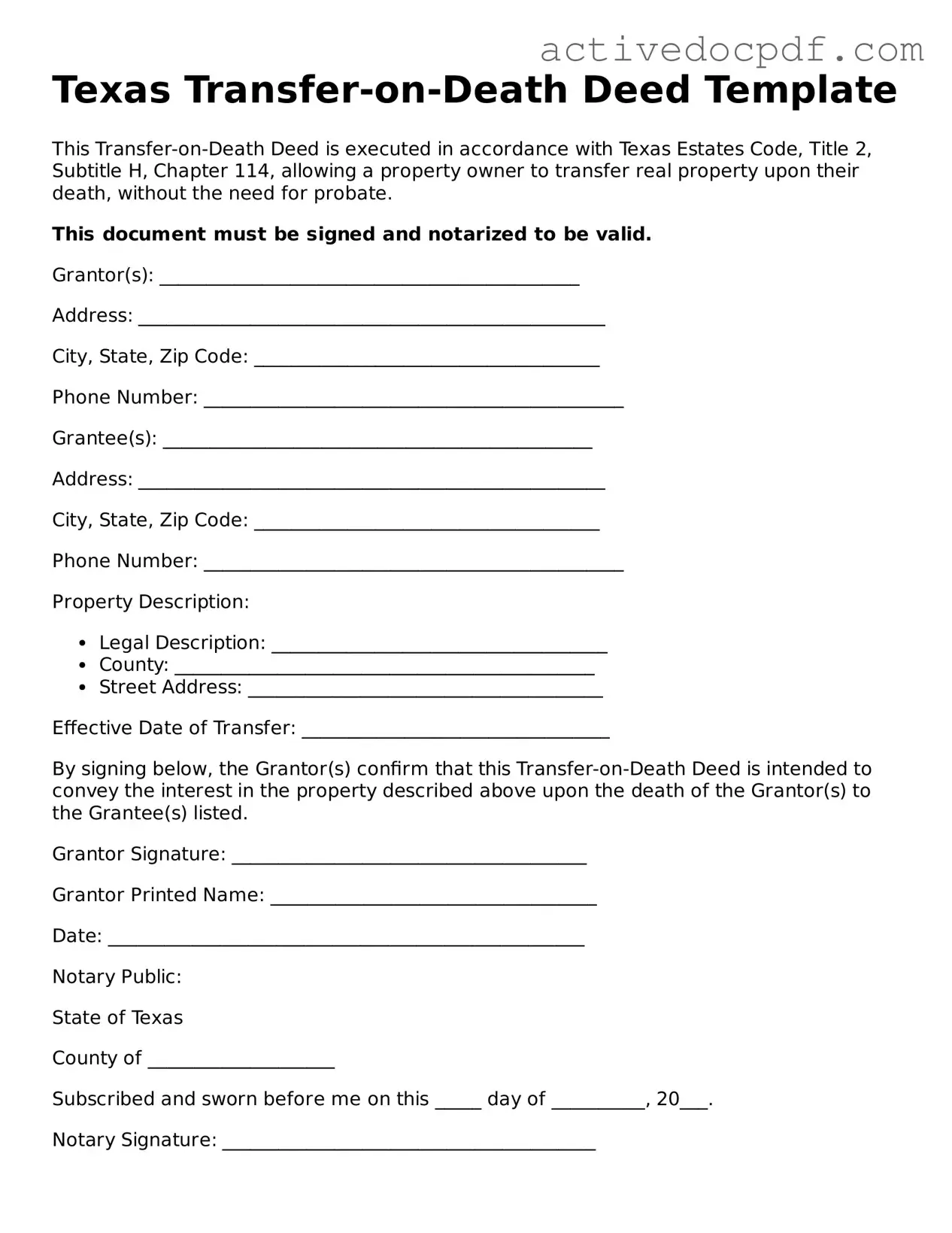What is a Texas Transfer-on-Death Deed?
A Texas Transfer-on-Death Deed (TODD) allows a property owner to transfer their real estate to a designated beneficiary upon their death. This deed does not take effect until the owner passes away, meaning the owner retains full control of the property during their lifetime.
How does a Transfer-on-Death Deed work?
When the property owner dies, the designated beneficiary can claim the property without going through probate. The TODD must be properly executed and recorded with the county clerk’s office where the property is located. This ensures that the transfer is legally recognized.
Who can be named as a beneficiary?
Any individual or entity can be named as a beneficiary in a TODD. This includes family members, friends, or even organizations. However, it’s important to ensure that the beneficiary is someone you trust to manage the property after your passing.
Are there any requirements for creating a Transfer-on-Death Deed?
Yes, there are specific requirements to create a valid TODD in Texas:
-
The deed must be in writing.
-
The property owner must sign the deed.
-
The deed must clearly identify the property and the beneficiary.
-
The deed must be recorded in the county where the property is located.
Can I change or revoke a Transfer-on-Death Deed?
Yes, you can change or revoke a TODD at any time while you are alive. To do this, you will need to create a new deed that either names a different beneficiary or explicitly revokes the previous deed. It is essential to record the new deed to ensure it is legally effective.
What happens if the beneficiary dies before me?
If the beneficiary named in your TODD passes away before you do, the transfer will not occur. You may want to consider naming an alternate beneficiary in your deed to avoid complications. This ensures that your property will still be transferred according to your wishes.
Is a Transfer-on-Death Deed the right choice for me?
A Transfer-on-Death Deed can be a good option for many property owners, especially if you want to avoid probate and ensure a smooth transfer of property to your loved ones. However, it’s wise to consult with a legal professional to discuss your specific situation and determine if this option aligns with your estate planning goals.
